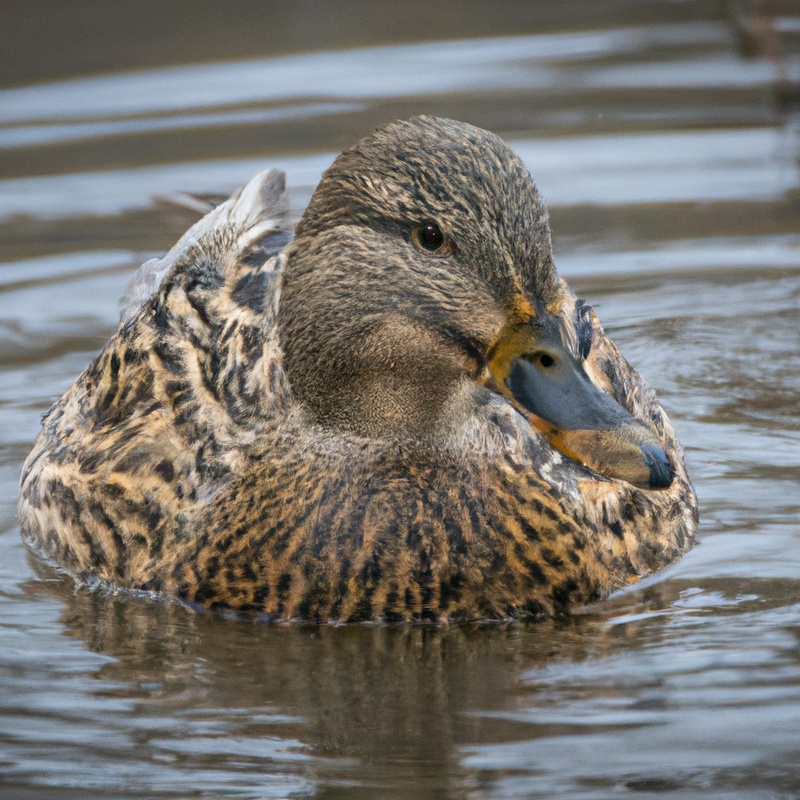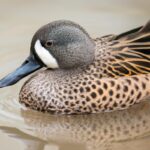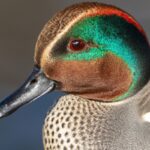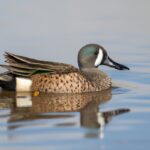Key Takeaways:
- Green-winged Teal are commonly hunted in Alaska.
- Hunting of green-winged Teal requires proper knowledge and skills.
- Alaska offers a prime location for hunting green-winged Teal.
- Conservation efforts are essential to maintain a sustainable green-winged Teal hunting season in Alaska.
Are you ready to embark on an exhilarating hunting adventure in the great wilderness of Alaska?
If you’re an avid waterfowl hunter, you won’t want to miss the opportunity to pursue the elusive green-winged Teal.
As an expert in Alaskan hunting, I know just what it takes to successfully hunt these fast-flying, agile birds.
In this article, I’ll guide you through the hunting season and regulations, the best time and locations to target green-winged Teal, the necessary equipment you’ll need, effective hunting strategies, and even how to prepare these delectable game birds for the table.
So grab your gear and let’s dive into the world of green-winged Teal hunting in Alaska!
| Hunting Green-winged Teal in Alaska | |
|---|---|
| Location | Alaska |
| Season | September to November |
| Bag Limit | 6 per day |
| Weapons | Shotgun (10, 12, or 20 gauge) |
| Ammunition | Non-toxic shot (e.g., steel, bismuth, or tungsten) |
| Hunting License | Alaska State Hunting License |
| Watercraft | Boats, canoes, or kayaks |
| Method | Decoying, calling, or jump shooting |
Hunting season and regulations in Alaska
Dates and duration of green-winged Teal hunting season
The green-winged Teal hunting season in Alaska typically runs from late August to early January.
The exact dates can vary each year, so it’s important to check the current hunting regulations to ensure you are within the legal hunting season.
Hunters are allowed to harvest a certain number of green-winged Teal per day, and there may also be restrictions on hunting methods and areas.
It’s essential to familiarize yourself with the specific regulations before going hunting to ensure you are in compliance with the law.
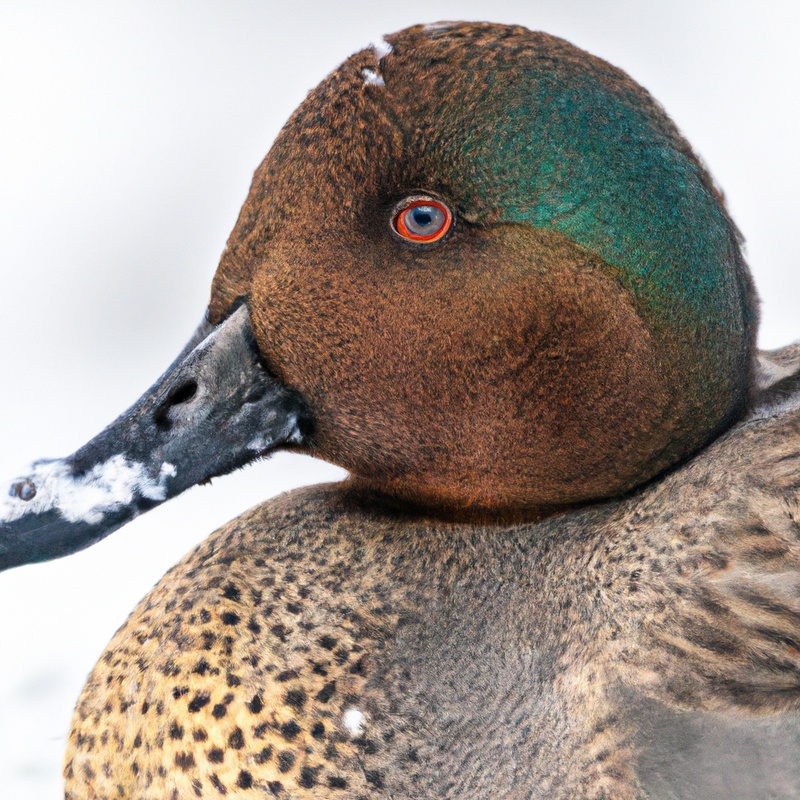
Licensing and permit requirements for hunting in Alaska
To hunt in Alaska, you’ll need a valid hunting license, which can be obtained by completing an online or in-person application. Additionally, specific permits may be required for certain species or areas.
For non-residents, there may be additional fees and requirements.
It’s essential to familiarize yourself with the Alaska Hunting Regulations, which outline bag limits, hunting seasons, and any restrictions or special rules. Make sure to carry your license and any required permits while hunting, as you may be asked to present them during a field inspection.
Happy hunting!
Best time and locations for hunting green-winged Teal in Alaska
Migration patterns of green-winged Teal in Alaska
Green-winged Teal have distinct migration patterns in Alaska. During the breeding season, they can be found in the northern and western parts of the state.
As winter approaches, these birds migrate south to find more favorable conditions.
They follow a primary migration route along the coast of Alaska, stopping at various wetland areas along the way. Some of the best locations to spot them during migration include the Alaska Peninsula, the Yukon-Kuskokwim Delta, and the Copper River Delta.
Keep in mind that their exact timing and route may vary from year to year.
Recommended hunting locations in Alaska
If you’re looking for the best hunting locations in Alaska to go after green-winged Teal, I’ve got some recommendations for you. These spots are known for their abundance of waterfowl and offer a great hunting experience:
- Kodiak Island: Known for its diverse wildlife, including waterfowl, Kodiak Island is a popular destination for duck hunting. Its marshes and ponds are prime locations to find green-winged Teal.
- Copper River Delta: Located in south-central Alaska, the Copper River Delta is a major staging area for waterfowl during migration. This delta is home to many ponds and wetlands that attract large numbers of green-winged Teal.
- Yukon-Kuskokwim Delta: Situated in western Alaska, the Yukon-Kuskokwim Delta is one of North America’s most important waterfowl breeding areas. This vast region is an excellent spot to target green-winged Teal during hunting season.
- Mat-Su Valley: Just north of Anchorage, the Mat-Su Valley is known for its diverse waterfowl populations. Lakes, ponds, and wetlands in this area attract green-winged Teal and other bird species, making it a promising hunting location.
- Kenai Peninsula: The Kenai Peninsula is home to a variety of waterfowl species, including green-winged Teal. The numerous lakes, rivers, and wetlands here provide ample opportunities for successful hunting.
Remember to always check local regulations and obtain any necessary permits before heading out to these locations. Also, be sure to practice ethical and responsible hunting techniques and respect the environment and wildlife.
Happy hunting!
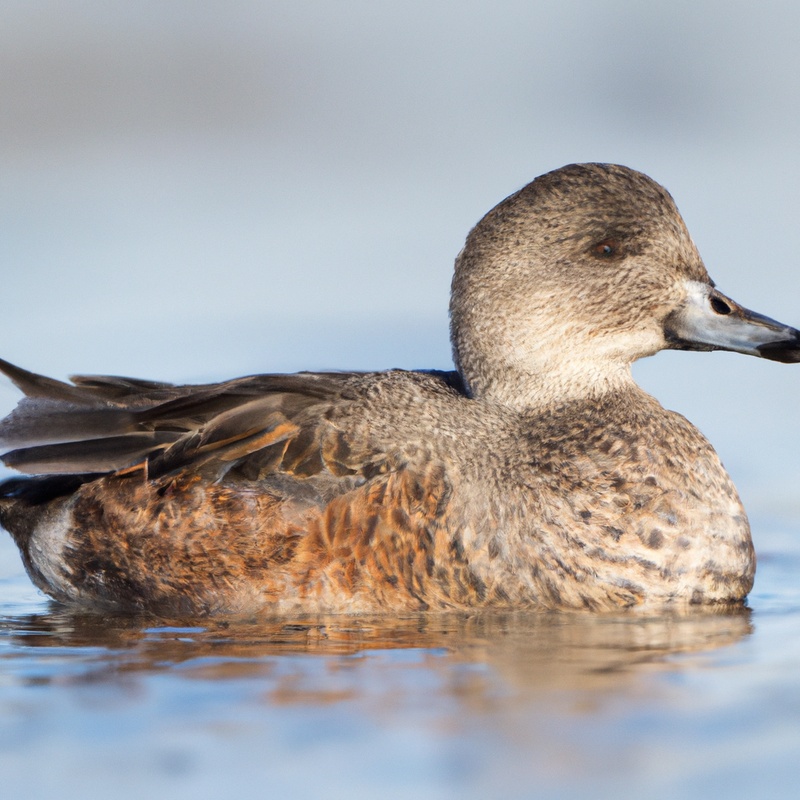
Necessary hunting equipment for green-winged Teal hunting in Alaska
Firearms and ammunition requirements
For hunting green-winged Teal in Alaska, there are specific firearms and ammunition requirements that you need to be aware of. You will need a shotgun that is capable of shooting steel or other non-toxic shot.
A 12-gauge or 20-gauge shotgun is recommended, with a modified or improved cylinder choke.
As for ammunition, you must use non-toxic shot that is designated for waterfowl hunting, such as steel or bismuth shot. It is important to abide by these requirements to ensure a safe and legal hunting experience.
Decoys, calls, and other gear for successful hunts
To have successful hunts for green-winged Teal in Alaska, you’ll need the right equipment.
Decoys are essential for attracting the ducks, so make sure to have a variety of mallard and teal decoys in your spread.
Calls are also crucial for luring in the birds, so have a reliable teal call in your arsenal.
Other gear to consider includes waders or hip boots for navigating wetland areas, camouflage clothing to blend in with the surroundings, and a reliable shotgun with appropriate ammunition.
Don’t forget to bring waterproof bags or cases for storing and protecting your gear.
Happy hunting!
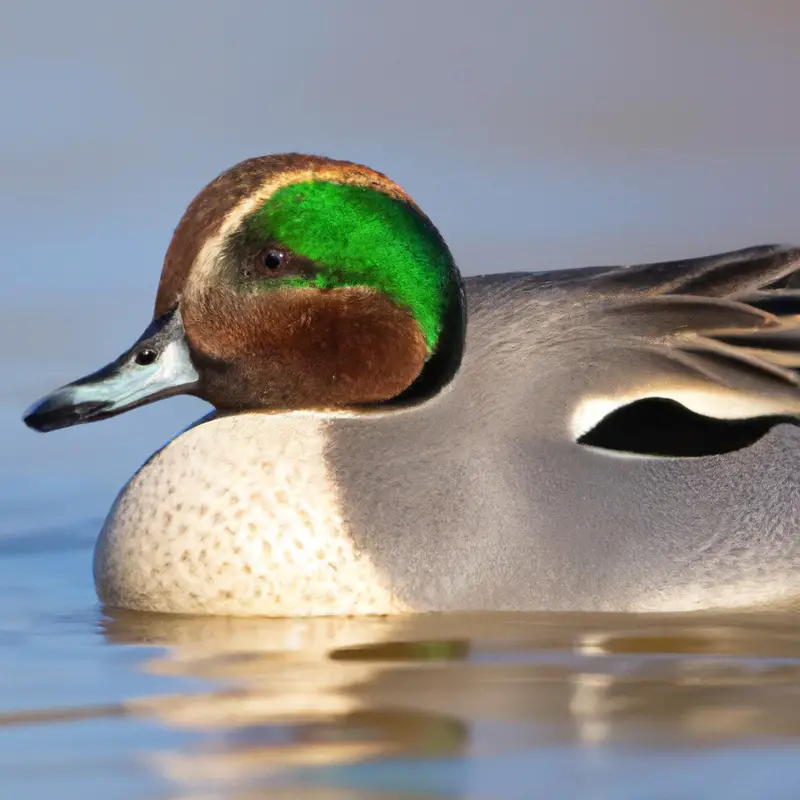
Hunting strategies and tips for green-winged Teal in Alaska
Understanding the behavior and habitat of green-winged Teal
Green-winged Teal exhibit unique behavior and have specific habitat preferences. They are highly social birds, often seen in large flocks during migration.
These ducks prefer shallow wetlands, marshes, and ponds with ample vegetation for feeding and nesting.
They are skilled in navigating through dense vegetation and can be found in both freshwater and brackish water habitats. Understanding their behavior and habitat is important when planning a successful hunt.
Observing their feeding patterns, preferred locations, and flight patterns will increase your chances of a productive hunt.
Remember, green-winged Teal are adaptable birds, so make sure to scout different areas to find their preferred habitat.
Techniques for approaching and decoying teal
Approaching and decoying teal requires a specific strategy to increase your chances of success.
Here are some techniques to keep in mind:
- Camouflage: Blend into your surroundings by wearing camo clothing and using blinds or natural cover like reeds or vegetation. This will help you remain unseen by teal.
- Decoy spread: Set up a decoy spread that mimics a group of teal on the water. Use teal-specific decoys and vary their positions to create a realistic scene.
- Calling: Use teal-specific calls to attract the birds. Keep your calls short and fast, imitating the sound of a group of teal. Pay attention to the birds’ responses and adjust your calls accordingly.
- Wind direction: Position yourself and your decoys with the wind at your back. Teal are more likely to land into the wind, so this will increase your chances of having them come within range.
- Patience: Teal can be fast and unpredictable, so be patient and wait for them to commit to your decoy spread before taking your shot.
Remember, every hunting situation is unique, so don’t be afraid to adapt and improvise based on the specific conditions and behavior of teal in your area.
Good luck!
Conservation and ethical considerations in green-winged Teal hunting
Bag limits and daily limits
Bag limits and daily limits are important factors to consider when hunting green-winged Teal in Alaska. Bag limits refer to the maximum number of birds an individual can legally take during a specific hunting trip, while daily limits indicate the maximum number of birds that can be harvested in a single day.
These limits are put in place to ensure the sustainability and conservation of wildlife populations.
It is essential to adhere to these regulations to prevent overharvesting and maintain healthy populations of green-winged Teal.
Responsible hunting practices to protect teal populations
Responsible hunting practices are crucial for protecting teal populations. Here are some important guidelines to follow:
- Only hunt during designated seasons to avoid disrupting breeding and nesting periods.
- Limit your harvest to sustainable levels and adhere to bag limits set by wildlife management agencies.
- Use non-toxic shot to prevent lead poisoning in teal and other waterfowl.
- Practice proper shot placement to ensure clean kills and minimize suffering.
- Respect no-hunting zones and protected areas to preserve habitat for teal and other wildlife.
By adhering to these responsible hunting practices, we can help safeguard teal populations for future generations to enjoy.
Preparing and cooking green-winged Teal
Cleaning and dressing teal after a successful hunt
Cleaning and dressing teal after a successful hunt is an important step in preparing them for cooking. Here’s a straightforward approach to get it done:
- Begin by plucking the feathers. It’s easiest to do this when the bird is still warm. Start from the breast and carefully remove the feathers, working your way towards the wings and tail.
- Once the feathers are removed, it’s time to gut the teal. Make a small incision near the vent and carefully remove the internal organs, being cautious not to puncture the intestines.
- Rinse the bird thoroughly under cold water to clean out any remaining blood or debris.
- If desired, you can then remove the wings and legs. This can be done by making a clean cut at the joints.
- Finally, pat the teal dry using paper towels and store it in a cool place or refrigerator until ready to cook.
Remember to properly dispose of the feathers, organs, and waste. It’s also important to handle the teal with cleanliness and hygiene to ensure safe and enjoyable meals.
Happy hunting and bon appétit!
Delicious recipes for cooking green-winged Teal
Cooking green-winged Teal can be a delicious experience! Here are a few recipes to try:
- Pan-Seared Teal Breast: Season the breast with salt and pepper, then sear it in a hot skillet with butter for about 2 minutes on each side. Let it rest and slice it thin.
- Teal Pâté: Combine cooked teal meat, butter, garlic, and herbs in a food processor. Blend until smooth and refrigerate. Serve on crackers or toasted bread.
- Teal Stir-Fry: Thinly slice teal breast and stir-fry it with vegetables like bell peppers, onions, and snap peas. Season with soy sauce and serve over rice.
Remember to experiment with flavors and techniques to make your teal dish even more enjoyable!
Frequently Asked Questions (FAQs)
What is the bag limit for green-winged Teal in Alaska?
The bag limit for green-winged Teal in Alaska is seven birds per day. This means that you are allowed to harvest up to seven green-winged Teal in a single day of hunting.
It’s important to note that bag limits can vary depending on the specific hunting season and location, so be sure to check the regulations before your trip.
Additionally, make sure to follow all other hunting regulations and practice ethical hunting to ensure the conservation of these beautiful birds. Happy hunting!
Can non-resident hunters hunt green-winged Teal in Alaska?
Yes, non-resident hunters can hunt green-winged Teal in Alaska.
However, they need to obtain the necessary licenses and permits before they can engage in hunting activities.
It’s important to check the specific regulations and requirements set by the Alaska Department of Fish and Game.
This may include things like hunting licenses, duck stamps, or additional permits.
Planning ahead and ensuring you have all the necessary documentation will help you have a successful and enjoyable hunting experience in Alaska.
How do I properly clean a green-winged Teal for cooking?
To properly clean a green-winged Teal for cooking, start by plucking the feathers from the bird.
Use pliers or your fingers to remove any remaining pinfeathers.
Next, make a small incision near the breast and carefully remove the entrails.
Rinse the bird thoroughly with cold water and pat it dry with a paper towel.
You can then marinate or season the teal according to your preference before cooking.
Enjoy your delicious meal!
Final Verdict
Hunting green-winged Teal in Alaska can be an exhilarating and rewarding experience for both residents and non-residents.
With proper knowledge of hunting regulations, the best time and locations, necessary equipment, and hunting strategies, hunters can increase their chances of a successful hunt.
However, it is crucial to prioritize conservation and ethical considerations, practicing responsible hunting practices to protect the teal populations.
And once you’ve had a successful hunt, don’t forget to clean and dress the teal properly before exploring the delicious recipes to create a mouthwatering meal.
Happy hunting! In summary, hunting green-winged Teal in Alaska requires a thorough understanding of hunting regulations and obtaining the necessary licenses and permits.
The best time and locations for hunting teal can be determined by understanding their migration patterns and choosing recommended hunting locations.
Proper hunting equipment, such as firearms, ammunition, decoys, and calls, is essential for a successful hunt.
Strategies for approaching and decoying teal can improve hunters’ chances of success.
Conservation and ethical considerations, including bag and daily limits, are crucial to protect teal populations.
Finally, cleaning and dressing teal properly and exploring delicious recipes can make for a satisfying culinary experience.
Overall, hunting green-winged Teal in Alaska requires knowledge, skills, and a commitment to responsible hunting practices.
